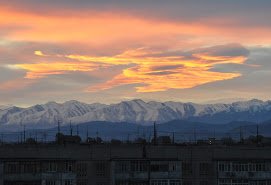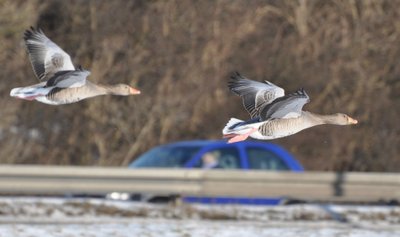A TALE ABOUT LIFE INCLUSION
DEH - europeanhouse.org
Kyrgyz nature
When we speak about Kyrgyzstan the image of the amazing nature comes involuntarily to our minds. Kyrgyzstan is one of the most interesting countries with enchanting beauty.
Kyrgyzstan's landscape, blessed by a dramatic range of weather conditions, different landscapes and altitudes, supports an amazing diversity of plant and animal life. Diversity of flora is determined by the altitudinal zoning. Slopes, varying by humidity, create different kinds of vegetation. On northern slopes steppes, meadow-steppes, meadows, bushes and forests are wide spread. On southern slopes, because of dry climate there are no zones of forests and alpine meadows; semi-deserts and deserts prevail here.
About 4000 species of plants have been catalogued in Kyrgyzstan. The richest in its floric composition are subtropical steppes, forests, and meadows with high grass of mountain-valleys and with low grass of Subalpine. Such variety of species is the richest gene pool providing relative steadiness of vegetable kingdom under the conditions of sharply changing phenomena of continental climate and utilization of its resources. As a whole the republic has favorable natural conditions. However gradually intensifying process of anthropogenous influences on environment impedes preservation of many species of animals and plants in condition of natural freedom. The most widely spread are spruce, juniper (archa), and nut- and fruit-tree forests. There are also spruce-abies, maple, poplar-willow, and birch forests. The walnut- and fruit-tree forests take up an area of over 600 thousand hectares and are the largest walnut- and fruit-tree forests in the world. They are located in the South-East of Kyrgyzstan in the Fergana and Chatkal ranges at the altitude of from 1000 m up to 2200 m above sea level. There grow walnut-trees, apple-trees, pear- trees, and cherry-plum, cherry, currant, and rasp-berries canes. Shrub thickets such as karaghun, cherry, rosary, pistachio, almond, cherry-plum, sea- buckthorn, barberry, mellow and others are widely spread. Sea-buckthorn, dog-rose, and willow grow in the flood-lands. Tien-Shan rowan-tree grows everywhere. In Alpine meadows at the altitude of 3000 m above sea level grow edelweiss, dandelion, aster Alpine, Semenov onion, primrose cold and other species of vegetation. One can meet different species of funguses in the forests, steppes, and meadows. The flora of Kyrgyzstan is rich in medical herbs such as: sage, ephedra, plantain, dog-rose, milfoil, dushitsa, wormwort and many others.
To help preserve the pristine, virgin, natural resources that it possesses, Kyrgyzstan has a total of 83 specially protected natural territories, with a total area of 761300 hectares, which is almost 4% of Kyrgyzstan's total land area. Perhaps, the most famous of these specially protected regions is Ala Archa - just outside Bishkek. One of the main tasks of the National Parks is to organize tourism that is not harmful to the nature.
The FAUNA in KYRGYZSTAN is also rich and diverse.
The wildlife of Kyrgyzstan comprises about 500 species of vertebrates and over 3000 species of insects. Over the territory of Kyrgyzstan one can find European, Siberian, Central-Asian, Front-Asian, and South-Asian species resulted in an extremely diverse fauna. There are inhabitants of deserts and forests, valleys and mountains, steppes and meadows. Among plants and animals there are a lot of valuable, rare and endemic species. Region fauna basis is made up by species peculiar to the Central Asian and Mediterranean regions. More than 500 species of vertebrates, including 83 mammals, 368 species of birds, 28 species of reptiles, 3 species of amphibians, 75 species of fish, 3000 species of insects can be found here. Among mammals the most famous are snow leopards, Marco Polo sheep, yaks, Menzbeer marmots, relic suslic, red Tien Shan and silver field alticola, ochotona rutila. Tien Shan and Pamir Alai endemics are 4 species of reptiles: Nickolski Lizard, Turkestan agama, Pavlovski agama, Alai ablepharus deserti. There are 60 species of dragon-flies, 86 species of daytime butter-flies, 86 species of ants, 33 species of bees, and 250 species of cicadas in Kyrgyzstan. In the Kyrgyz water reservoirs dwell 49 species of fish. In the Issyk-Kul lake there is such fish as chebachok, chebak, sazan, carp, trout, marinka, osman, bream, line, pike- perch, sig, and crucian. In various water reservoirs and rivers dwell sazan, crucian, barbel, pike, marinka and other species of fish. In the mountain rivers dwells trout. There are 25 species of reptiles including tortoises, lizards, and snakes in Kyrgyzstan. Birds are represented by 335 species. In different areas one can meet pheasant, gray heron, cherry bird, tridactyl woodpecker, eagle-owl, silvered sea-gull, red-wing flamingo and other birds. On the unfrozen Issyk-Kul Lake hibernate mute swans, whooping swans, gray geese, pink and wavy pelicans. There are such rare birds as balaban, white stork, golden eagle, bearded vulture, bustard, demoiselle crane, snake eater, white-tail sea eagle, steppe eagle, black stork and others in Kyrgyzstan. 83 species of mammals dwell on the territory of Kyrgyzstan. One can encounter a mountain sheep (arkhar), bear, and maral in spruce forests of the Tien-Shan, and in Ak-Sai, Arpa, and Suusamyr highly mountainous valleys. The mountain ridges and valleys are the places for dwelling of fox, wolf, badger, weasel, ermine, and stone marten. In Kyrgyzstan dwells snow leopards, wild boars, roe deers, Siberian goats, porcupines, hedgehogs, hares, marmots and others. Kyrgyzstan protects such rare animals as dzheiran, red wolf, maral, snow leopard, Middle-Asian otter, Mensbir marmot, Tien-Shan brown bear, and Tien-Shan mountain sheep (arkhar) and others. Some animals of Kyrgyzstan are recorded in Red Book of International Nature Preserve Union.
From www.mykyrgyzstan.ch
Copyright © All Rights Reserved
DEH
Uraniavej 5
1878 Frederiksberg C
Photos: Lars Steinov, TEH
Questions on nature
1. What is the highest point in Kyrgyzstan? In Denmark?
2. How was nature evolved in Kyrgyzstan? In Denmark?
3. How may nature influence the equality among people?
Besøg undervisningspakken:






